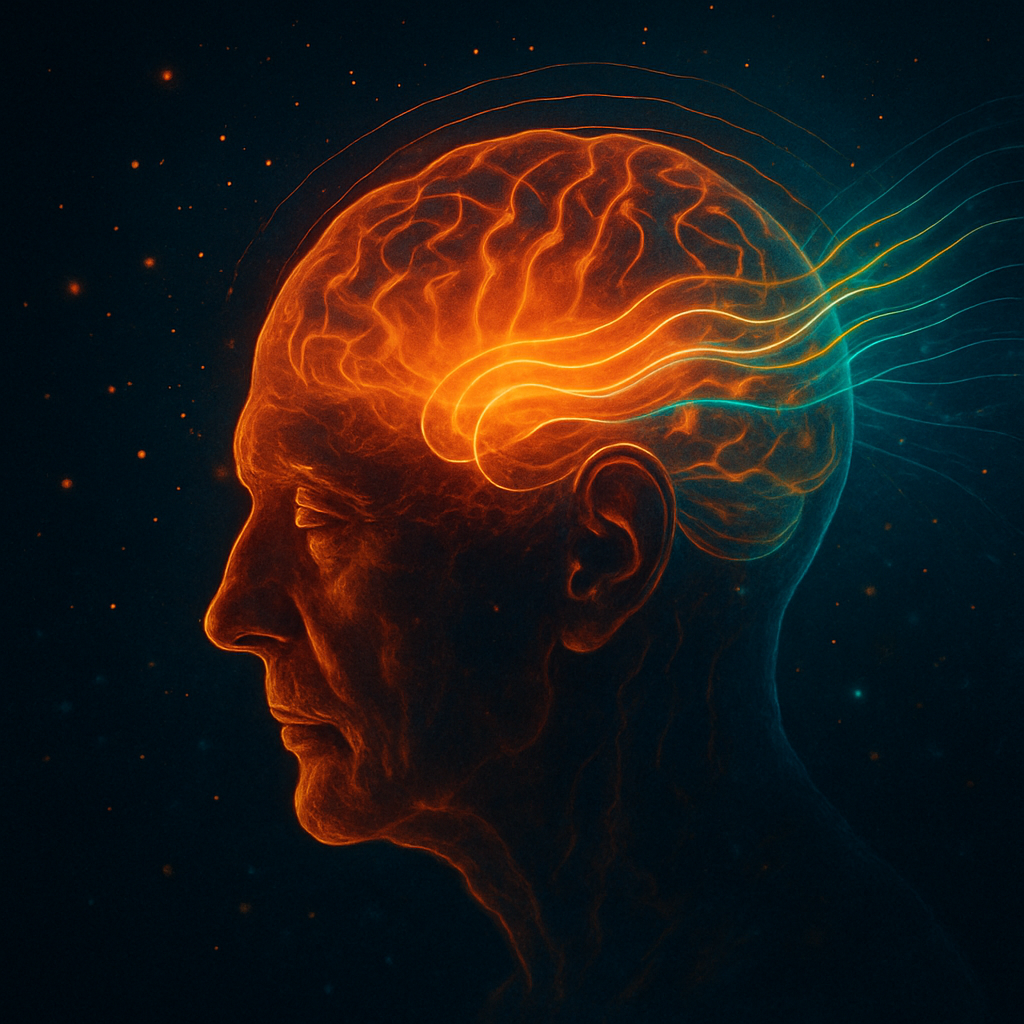By © Alexandra Chambers | 22nd July 2025
“You were never broken, you are built differently and for a different purpose – and that purpose matters now, more than ever”
Many autistic individuals have been taught, directly or indirectly, that their inherent traits are defects; errors in the code. However, the fields of neurology and genetics tell a very different story: that autism is not a flaw in human design, but a naturally occurring cognitive variation with deep evolutionary roots.
This article explores the inherent, science-backed traits of autism that may have served essential functions throughout human history – from heightened perception to moral clarity – and how reclaiming this truth can help dismantle stigma and internalised shame.
1. Deep Focus and Cognitive Agility
Autistic individuals often demonstrate extraordinary cognitive strengths – including deep focus, pattern recognition, and fast adaptation to novel problems. These are not signs of deficit; they are signatures of a spiky cognitive profile: one with sharp peaks of brilliance in areas like memory, logic, visual thinking, or creative ideation.
Neurodivergent brains often show asynchronous development, where certain regions mature earlier or more intensely, giving rise to areas of specialisation (Happé & Frith, 2009).
Autistic individuals may demonstrate enhanced perceptual functioning, excelling in detail detection, spatial reasoning, and bottom-up logic (Mottron et al., 2006).
ADHD minds, by contrast, tend to show high cognitive flexibility, divergent thinking, and idea generation under pressure (White & Shah, 2006).
These traits aren’t random – they serve deep evolutionary roles, allowing humans to adapt, innovate, and see what others miss.
📌 Framing: This isn’t “fixation” or “distraction” – it’s neurocognitive range. It’s nature’s way of covering all bases.
2. Intelligence, Misunderstood
Many autistic individuals – and neurodivergent people more broadly – are highly intelligent, often far beyond what traditional systems recognise. This intelligence is frequently misread, masked, or missed entirely, especially when it presents in nonconforming ways.
Neurodivergent intelligence is often asynchronous; with advanced skills in reasoning, visual logic, or creativity, but delays or challenges in areas like speech, fine motor tasks, or conventional learning formats (Happé & Frith, 2009).
Standard IQ tests often underestimate autistic intelligence by relying on fast verbal responses and culturally narrow tasks.
Multiple studies confirm a statistical correlation between autism traits and high intellectual ability, particularly in fluid reasoning, memory, and systems thinking (Hoekstra et al., 2007; Soulières et al., 2009).
A 2015 pilot study found that many minimally verbal autistic children scored in the 90th percentile or above when tested using visual, nonverbal tools – despite previously being labelled as having “low IQ” based on traditional tests (Courchesne et al., 2015).
🧠 Boxed Insight:
Many nonverbal or minimally verbal autistic individuals are extraordinarily intelligent – not in spite of their silence, but alongside it. Once communication barriers are lifted, their insights often rival or exceed those of their verbal peers. Studies and lived experience alike reveal that intelligence is not bound to speech.
📌 Framing: Autistic minds are not broken. They’re often thinking faster, deeper, and differently – in ways the world does not know how to measure.
3. When Autism Meets ADHD

Many autistic people also live with ADHD – a profile often referred to as AuDHD – which creates a unique synergy of abilities not found in either diagnosis alone.
Between 50–70% of autistic individuals also meet criteria for ADHD (Antshel et al., 2013).
AuDHD brains may show distinct processing patterns, combining enhanced sensory attention with flexible cognitive navigation.
The combination often produces powerful hyper-focus states, where deep immersion (autism) is fused with intense, spontaneous drive (ADHD).
This blend supports both deep expertise and rapid idea generation, especially in problem-solving, creative work, and abstract thought.
📌 Framing:
AuDHD brings an amplified version of focused brilliance – creative, passionate, and often all-consuming. It’s not just autism + ADHD. It’s a synergy that combines deep engagement with fast-moving, idea-rich cognition – a potent mode of flow and innovation.
4. Sensory Sensitivity as Environmental Radar
Many autistic individuals experience heightened sensitivity to sound, light, texture, or smell. While this can be overwhelming in a sensory-saturated world, in a natural setting, it likely functioned as an evolutionary advantage – an early-warning system.
Studies show that autistic people detect changes in their environment faster and with more accuracy than neurotypical peers (Tavassoli et al., 2014).
This is vital for spotting danger, tracking animals, or predicting weather shifts.
📌 Framing: Sensory processing differences are not errors – they’re enhancements.
5. Moral Clarity & Ethics
Autistic individuals often express a strong sense of justice and fairness, paired with black-and-white moral reasoning. Though sometimes pathologised as “rigid,” this trait may have served to protect social groups from exploitation.
Research shows that autistic individuals are more consistent in moral reasoning and less susceptible to social influence when making ethical decisions (Zalla et al., 2011).
This makes them valuable truth-tellers in cultures drifting into conformity or corruption.
📌 Framing: Integrity isn’t inflexibility. It’s a stabilising force.
6. Resistance to Social Conditioning
Unlike most, autistic individuals are less driven by social approval or peer validation. This often results in nonconformity, which can be pathologised – but in evolutionary terms, it’s essential.
Neuroimaging studies reveal different neural activation in autistic individuals during social tasks, showing lower susceptibility to social contagion (Yafai et al., 2013).
This resistance may have protected groups from harmful trends, authoritarian control, or cognitive groupthink.
📌 Framing: Those who can think outside the ‘system’ are often the ones who redesign it for everyone’s benefit.
7. Exceptional Memory and Information Retention

Autistic individuals may exhibit enhanced factual memory, spatial recall, or detail retention – traits that serve as biological libraries.
Autistic people are more likely to retain precise information and sequences, which in oral cultures meant preserving lore, rituals, migrations, and medical knowledge (Boucher et al., 2012).
📌 Framing: Forget the stereotypical interpretation. Some autistic minds are built to remember what matters.
8. Monotropism and Flow States
Autistic attention often “funnels” into one subject at a time – a cognitive trait known as monotropism. This enables a level of focus that borders on altered consciousness.
Murray et al. (2005) proposed that autistic attention systems are designed for depth, not breadth, which can facilitate breakthroughs in problem-solving or art.
Flow states – when one is so immersed that time disappears – are common among autistic creators and thinkers.
📌 Framing: Monotropic attention isn’t a limitation; it’s the gateway to genius, to creation, to invention.
9. Low Need for Social Dominance
Autistic individuals are typically uninterested in hierarchy, status games, or manipulation. This fosters authenticity, egalitarianism, and sincerity – traits highly valued in communal or spiritual cultures.
Studies show reduced activation in social reward networks in autistic brains (Chevallier et al., 2012), meaning they are less driven by popularity or power.
Born to change the rules. For the benefit of everyone.
10. Conclusion: Evolution Did Not Make a Mistake

Nature does not preserve genes, lineage after lineage for no reason. Autism is not a genetic defect to correct – it is a purposeful natural variation, one society needs to understand and protect. Once you learn the genetics and science, you truly realise this. However, education on divergent genetics is a complex topic and has long been pathologized and suppressed. I intend to build resources here that gives everyone who is interested, access to that understanding.
None of this seeks to undermine the neurodivergent and/or profoundly disabled members of our community, and those of us who struggle in todays world with chronic illness. I am one. I believe that we inhabit a toxic, corrupted reality, and despite our evolving genetics, we are still ultimately impacted by our surroundings. Often more so than we are even aware. This is why we need multi-sector & institutional change, now more than ever before.
We exist as a divergent species because diversity is strength. Neurodivergent people may struggle in an inverted world, but their minds carry rare keys – to knowledge, justice, innovation, and truth.
If we stopped asking neurodivergent people to change and instead asked the world to shift, we might finally unlock the full value of human evolution.
References
Antshel, K. M., Zhang-James, Y., Wagner, K. E., Ledesma, A., & Faraone, S. V. (2013). An update on the comorbidity of ADHD and ASD: A focus on clinical management. Expert Review of Neurotherapeutics, 13(4), 515–530. https://pubmed.ncbi.nlm.nih.gov/26807870/
Boucher, J., Mayes, A., & Bigham, S. (2012). Memory in autistic spectrum disorder. Psychological Bulletin, 138(3), 458–496. https://doi.org/10.1037/a0026869
Chevallier, C., Kohls, G., Troiani, V., Brodkin, E. S., & Schultz, R. T. (2012). The social motivation theory of autism. Trends in Cognitive Sciences, 16(4), 231–239. https://doi.org/10.1016/j.tics.2012.02.007
Courchesne, V., Meilleur, A.-A. S., Poulin-Lord, M.-P., Dawson, M., & Soulières, I. (2015). Autistic children at risk of being underestimated: school-based pilot study of a strength-informed assessment. Molecular Autism, 6(1), 12. https://pubmed.ncbi.nlm.nih.gov/25774281/
Happé, F., & Frith, U. (2009). The Beautiful Otherness of the Autistic Mind. Philosophical Transactions of the Royal Society B: Biological Sciences, 364(1522), 1345–1350. https://pubmed.ncbi.nlm.nih.gov/19528016/
Hoekstra, R. A., Bartels, M., Verweij, C. J. H., & Boomsma, D. I. (2007). Heritability of autistic traits in the general population. Archives of Pediatrics & Adolescent Medicine, 161(4), 372–377. https://doi.org/10.1001/archpedi.161.4.372
Mottron, L., Dawson, M., Soulières, I., Hubert, B., & Burack, J. (2006). Enhanced perceptual functioning in autism: An update, and eight principles of autistic perception. Journal of Autism and Developmental Disorders, 36(1), 27–43. https://doi.org/10.1007/s10803-005-0040-7
Murray, D., Lesser, M., & Lawson, W. (2005). Attention, monotropism and the diagnostic criteria for autism. Autism, 9(2), 139–156. https://doi.org/10.1177/1362361305051398
Soulières, I., Dawson, M., Samson, F., Barbeau, E. B., Sahyoun, C. P., Strangman, G. E., Zeffiro, T. A., & Mottron, L. (2009). Enhanced visual processing contributes to matrix reasoning in autism. Human Brain Mapping, 30(12), 4082–4107. https://doi.org/10.1002/hbm.20831
Tavassoli, T., Miller, L. J., Schoen, S. A., Nielsen, D. M., & Baron-Cohen, S. (2013). Sensory over-responsivity in adults with autism spectrum conditions. Autism, 18(4), 428–432. https://doi.org/10.1177/1362361313477246
White, H. A., & Shah, P. (2006). Uninhibited imaginations: Creativity in adults with Attention-Deficit/Hyperactivity Disorder. Personality and Individual Differences, 40(6), 1121–1131. https://doi.org/10.1016/j.paid.2005.11.007
Yafai, N., Verrier, D., & Reidy, L. (2013). Social conformity and autism spectrum disorder: A child friendly take on a classic study 44(7), 1931–1939. https://journals.sagepub.com/doi/abs/10.1177/1362361313508023
Zalla, T., Barlassina, L., Buon, M., & Leboyer, M. (2011). Moral judgment in adults with autism spectrum disorders. Cognition, 121(1), 115–126. https://doi.org/10.1016/j.cognition.2011.06.004
This work is licensed under a Creative Commons Attribution-NonCommercial-NoDerivatives 4.0 International License.
